Objective:
To review the initial results of embryo chromosomal competency and pregnancy success generated from one IVF laboratory by a new preimplantation genetic screening (PGS) service provider, Ovation Fertility Genetics.
Design:
Retrospective analysis in a private genetics laboratory.
Materials and Methods:
1861 blastocyst stage embryos underwent trophectoderm biopsy and subsequent comprehensive chromosomal screening (CCS) by next generation sequencing (NGS) over a 17-month period. Mature oocytes were fertilized using ICSI and embryos were group cultured to the blastocyst stage for 7 days using Continuous Single Culture Medium (Irvine Scientific). On Day 3 of embryo development, all multi-cell embryos were artificially hatched by laser ablation of the zona pellucida. Trophectoderm biopsy was dependent upon good quality hatching of blastocysts on either Day 5, 6 or 7. Biopsied blastocysts were subsequently vitrified for potential future use in a frozen embryo transfer (WET) cycle. Chromosomal copy number was assessed with the Illumina MiSeq platform, involving whole genome amplification followed by fragmentation and tagging with index primers and subsequent sequencing at a ~0.1x read coverage. Embryos reported as normal had no detectable copy number aberration, at a threshold of ≤30%. A threshold of ≥50% was defined for any whole chromosome gain/loss for chromosomes 1, 2, 3, 4, 5, 10, 12, 17, 19, and/or 22. A threshold of ≥30% was set for chromosomes 6, 7, 8, 9, 11, 13, 14, 15, 16, 18, 20, 21, X, Y as well as segmental duplications and/or deletions for any of the chromosomes. A complex abnormality result was defined as a combination of three or more copy number abnormalities consisting of trisomy and/or monosomy with an indeterminate result determined as inconclusive data for chromosomes 1, 2, 3, 4, 5, 10, 12, 17, 19, and/or 22. Whole chromosome gains/losses >30% but <50% for one or more of the given chromosomes lead to an indeterminate result.
Results:
1861 blastocysts from patients of all age were biopsied yielding an overall normal euploid rate of 44% (815), abnormal rate of 44% (817), complex abnormal rate of 11% (201), indeterminate result rate of 0.9% (17) and a no result rate of 0.6% (11). No significant difference in result reporting categories and implantation rates were observed between Day 5 and Day 6 embryos (P<0.05). However, results of Day 7 embryos were significantly different compared to Day 5 and Day 6.
Table 1: Embryo diagnosis results by percentage of total for biopsy day.
| % Normal |
% Abnormal |
% Complex |
% Indeterminate |
% No Result |
% Implantation Rate |
|
| Day 5 | 22.25 | 17.20 | 4.08 | 0.43 | 0.16 | 56 |
| Day 6 | 18.22 | 22.78 | 6.13 | 0.43 | 0.38 | 60 |
| Day 7 | 3.33 | 3.9 | 0.59 | 0.05 | 0.05 | 23 |
Conclusion:
A recent meta-analysis concluded that euploid embryos identified by CCS were more likely to implant and increase live birth rates compared to those embryos selected by standard morphology (Chen 2015). Based on the first application of next-generation sequencing technology for 24-chromosome aneuploidy screening of embryos (Fiorentino 2014), this technology has provided high accuracy results using a flexible and cost effective strategy. The use of NGS by new genetic screening providers produces promising results for higher pregnancy success.
Disclosures:
none
Funding:
none
References:
Chen, Minghao, et al. “Can comprehensive chromosome screening technology improve IVF/ICSI outcomes? A meta-analysis.” PLoS One 10.10 (2015): e0140779.
Fiorentino, Francesco, et al. “Development and validation of a next-generation sequencing–based protocol for 24-chromosome aneuploidy screening of embryos.” Fertility and sterility 101.5 (2014): 1375-1382.











